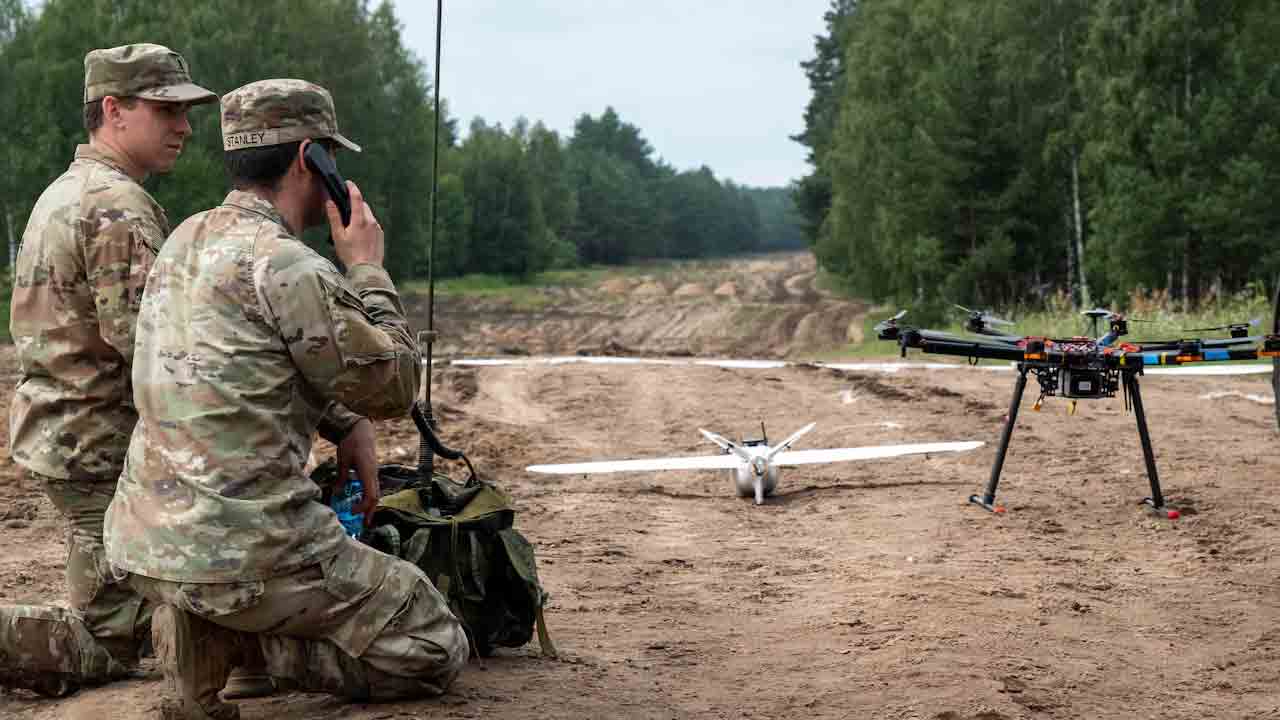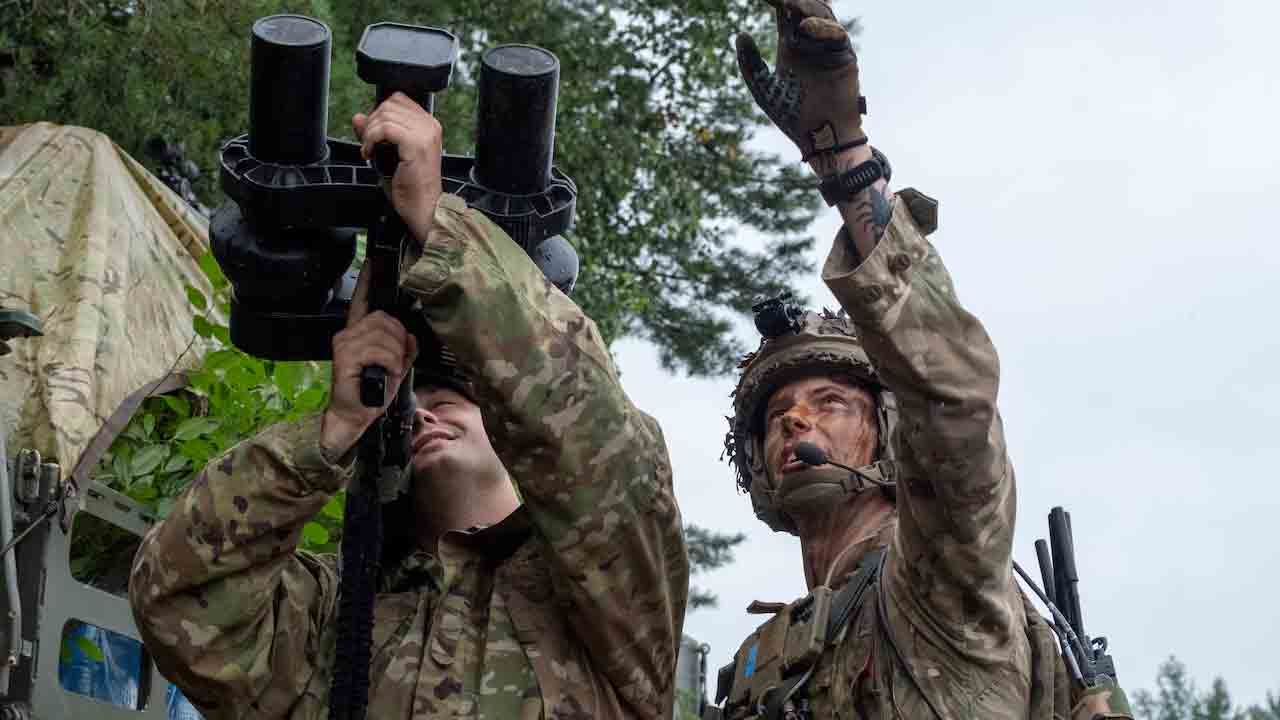Soldiers from the 2nd Cavalry Regiment of the U.S. Army demonstrated their ability to detect, track and neutralize multiple drones using the Ballistic Low Altitude Drone Engagement (BLADE) system integrated into Stryker vehicles during a live ammunition exercise at Bemovo Piski training ground in northeastern Poland on August 1, 2025.
This activity was carried out as part of Project Flytrap 4.0, which aims to develop new tactics and technologies for countering drones.
Several air threats were introduced simultaneously, requiring prompt responses, according to David Goldstein, head of UAS systems at the Army Combat Capabilities Development Command Armaments Center.
+ Russia releases artillery footage of missile ship “Velky Ustug” in the Caspian Sea
“The system defeated one target and engaged and neutralised another within seconds,” he emphasized.
Drone counter-technology

Combining high-precision radar, drone fire control software and the CROWS platform, BLADE offers operators the ability to identify and track targets and calculate interception points in real time. During the Poland exercise, the system fired air targets ranging from 500 to 800 meters using an M2.50 caliber machine gun.
In addition to live fire, BLADE also took part in ammunition-free training scenarios, simulating threat detection and tracking.
Integration with allies and new solutions

Project Flytrap 4.0 featured soldiers from the 2nd US Cavalry Regiment and the 1st British Battalion Royal Yorkshire Regiment, and a joint exercise exploring the use of new anti-drone technology.
The program also featured CNALT software developed by the Weapons Development Center. The software provides fire control and tactical visualization tools, reducing the time of engagement cycles (so-called “kill chains”). With just 15 minutes of training, the soldiers were able to operate the system and make engagement recommendations based on real-time sensor data.
Source and Images: defense.gov. This content was created with the cooperation of AI and was reviewed by the editorial team.

